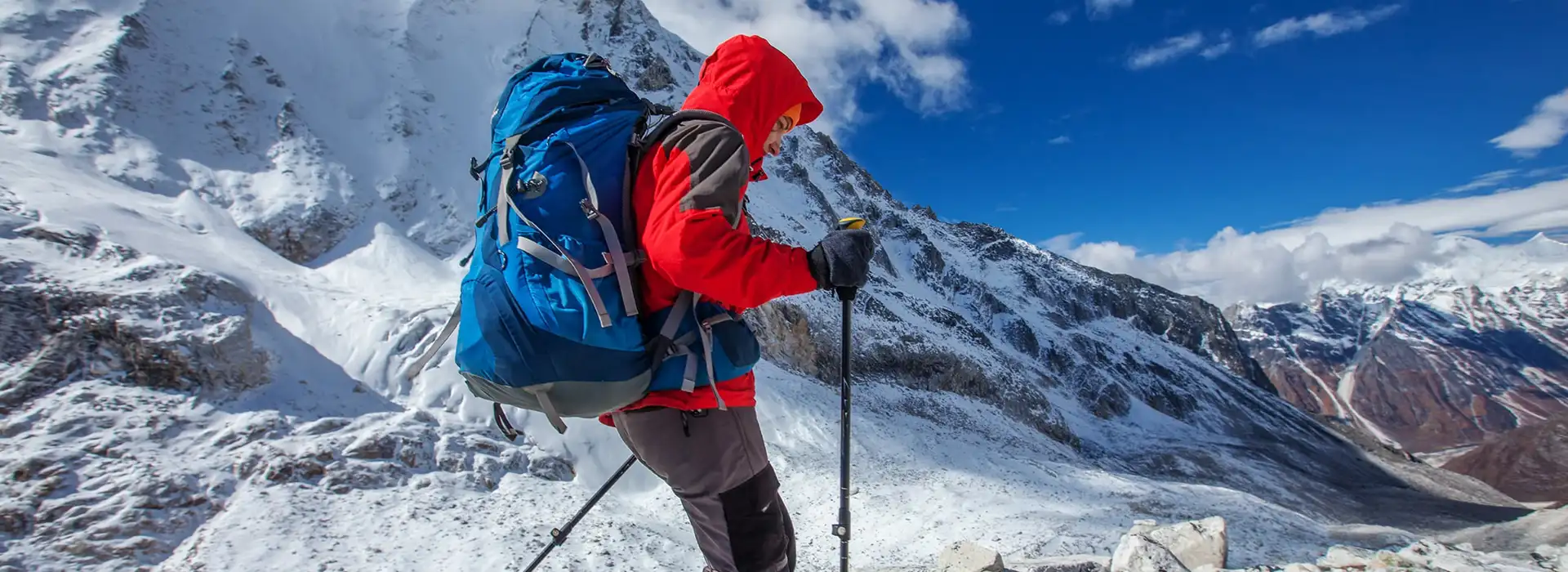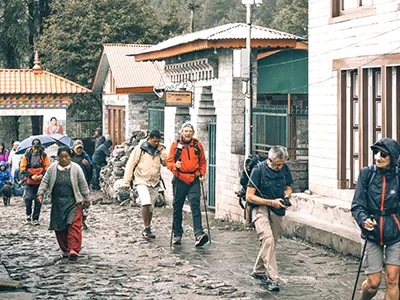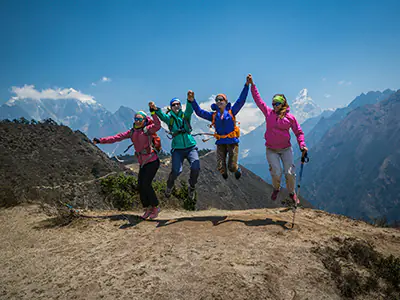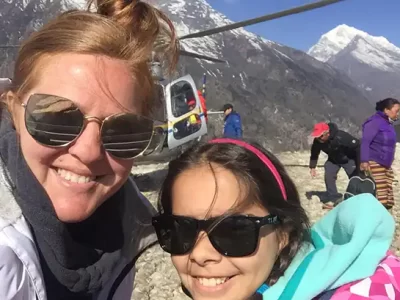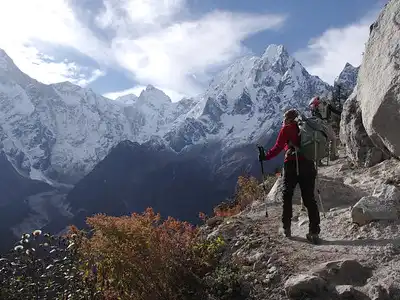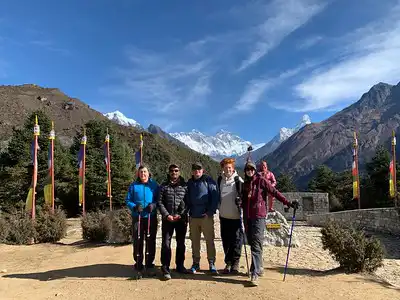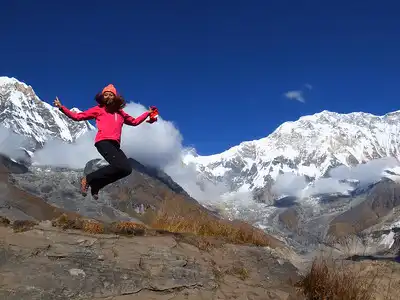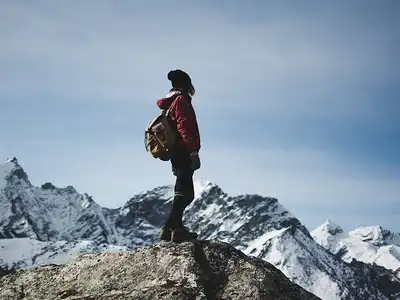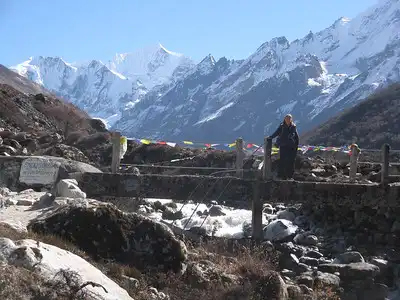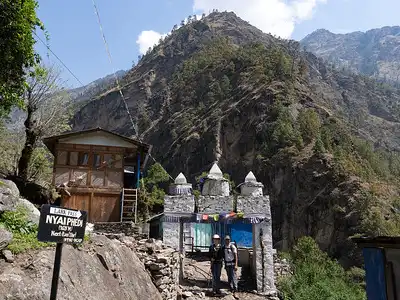The Everest Base Camp Trek, nestled in the heart of the Himalayas, is one of the world’s most iconic and sought-after trekking experiences. This adventure takes intrepid explorers through breathtaking landscapes charming Sherpa villages, and culminates at the base of the majestic Mount Everest.
Everest Base Camp Trek in August offers a unique allure to adventurers seeking an unforgettable Himalayan journey. While the monsoon season blankets Nepal with rain, the Everest region takes on a distinct beauty during this time. The verdant landscapes come alive with lush foliage, and the rivers and waterfalls gush with renewed vigour. Though quieter than in peak seasons, the trails pulsate with the energy of those who have chosen the less travelled path.
As we delve into the details of trekking to Everest Base Camp in August, let’s uncover the beauty and challenges that come together to create an extraordinary adventure in the lap of the world’s highest peaks.
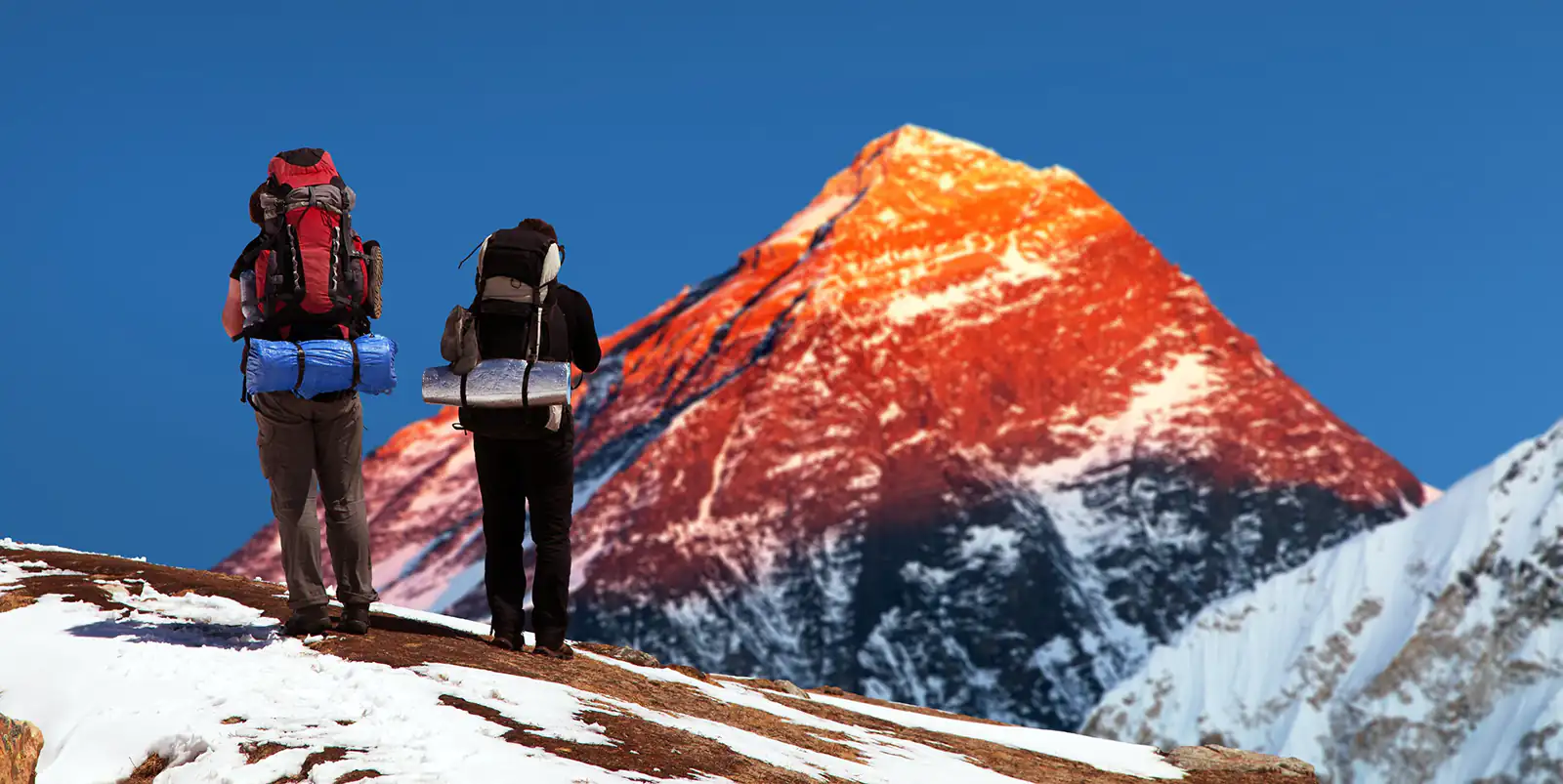
Weather and Conditions in August
A. Monsoon season and its impact on the region
August ushers in Nepal’s monsoon season, bringing a unique Everest Base Camp Trek atmosphere. The impact of the monsoon is tangible, as the region experiences increased rainfall and occasional cloud cover. While the prospect of rain might seem daunting, it adds a touch of magic to the landscapes, enhancing the lushness of the surroundings and transforming the trails into glistening pathways.
B. Temperature, precipitation, and visibility considerations
Temperature variations during the Everest Base Camp Trek in August can be noticeable. While daytime temperatures hover around moderate levels, the evenings and mornings are more relaxed. Precipitation levels are higher, resulting in the occasional mist and fog that can play hide-and-seek with panoramic views. Despite this, the dramatic beauty of the Himalayan vistas remains awe-inspiring, especially when the clouds part to reveal glimpses of towering peaks.
C. Pros and cons of trekking during the monsoon
Trekking during the monsoon season presents a unique blend of advantages and considerations. The pros include fewer crowds on the trails, allowing trekkers to experience a more serene journey and relish the tranquillity of nature. The vibrant flora and blooming flowers add an ethereal touch to the surroundings. However, the cons involve the potential for muddy and slippery trails, disrupted flights to Lukla due to weather conditions, and the need for extra precautions against leeches.
Preparation and Essential Gear
A. Packing list for August trekking
A thoughtfully planned packing list is paramount for those trekking at the Everest Base Camp in August. Lightweight and moisture-wicking clothing, including quick-drying shirts and pants, should top the list. Packing extra socks and waterproof hiking boots will prove invaluable during wet conditions. Carrying a sturdy backpack and a compact daypack ensures you’re well-equipped for the journey ahead.
B. Importance of proper rain gear and waterproofing
The significance of proper rain gear and waterproofing cannot be overstated during the monsoon season. Investing in a high-quality rain jacket, rain cover for your backpack, and waterproof pants shields you from the elements and keeps you comfortable. Ensuring your gear is adequately waterproofed protects your belongings from potential rain exposure and helps maintain your spirits amidst changing weather.
C. Staying comfortable and safe in changing weather conditions
Staying comfortable and safe amidst shifting weather patterns requires meticulous planning. Layering is crucial in adapting to varying temperatures, so pack lightweight and warm layers. A waterproof and windproof outer layer is indispensable. Carrying a reliable and collapsible trekking umbrella can provide instant relief during intermittent showers. Prioritizing a well-fitted rain cover for your backpack safeguards your valuables.
Luxury Everest Base Camp Trek
Everest Base Camp Trek for Beginners
Everest Base Camp Trek with Helicopter Return
Benefits of August Trekking
A. Fewer crowds and quieter trails
Everest Base Camp Trek in August rewards adventurers with the luxury of fewer crowds and quieter trails. The off-peak season ensures a more serene journey, allowing trekkers to savour the beauty of the landscapes without the hustle and bustle often associated with peak months. This sense of solitude enhances the connection with nature and fosters a deeper appreciation of the Himalayan wilderness.
B. Lush landscapes and blooming flora
The allure of August trekking lies in the breathtaking transformation of the landscapes. Lushness envelops the trails as the monsoon nourishes the earth, bringing forth life through blooming wildflowers and vibrant greenery. The contrast between the misty mountains and the vivid hues of nature creates a surreal and captivating panorama, making every step a feast for the eyes.
C. Unique cultural experiences during monsoon festivals
Beyond the trails and scenery, August trekking presents unique cultural experiences tied to monsoon festivals. As you journey through Sherpa villages, you might visit celebrations like Janai Purnima and Gai Jatra, where local traditions and customs take centre stage. Participating in these festivals offers an intimate glimpse into the lives and values of the resilient mountain communities.
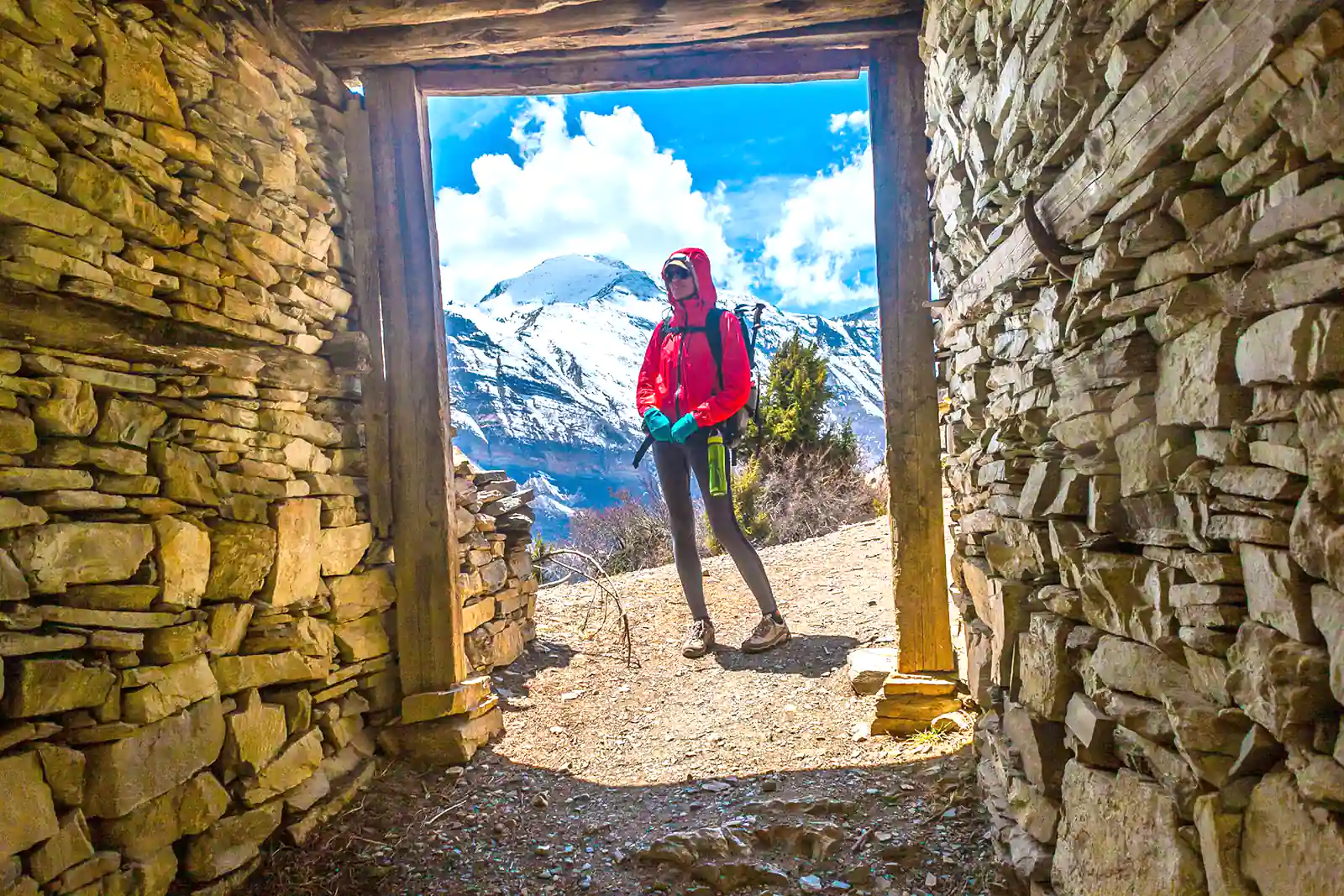
Challenges and Considerations
A. Trail conditions and potential mudslides
While Everest Base Camp Trek in August offers unique rewards, it’s essential to acknowledge the challenges the monsoon season brings. Trail conditions can become slippery due to the rain, making certain journey sections more arduous. Trekkers should exercise caution, utilize appropriate footwear, and be prepared to navigate through muddy terrains. Awareness of potential mudslides is crucial for safety.
B. Flight delays and cancellations due to weather
During monsoon season, flight delays and cancellations due to adverse weather conditions are expected. Flights to and from Lukla, the gateway to the Everest region, can be disrupted, leading to adjustments in the trekking itinerary. It’s advisable to keep a buffer of extra days to account for potential flight disruptions and ensure a stress-free journey.
C. Health precautions and managing leeches
Health precautions take on added significance during the monsoon season. Trekking through humid and wet conditions requires attention to personal hygiene to prevent infections. Leeches are another consideration, particularly in forested areas. Proper clothing and applying leech-repellent measures are crucial to managing these challenges and ensuring a comfortable trekking experience.
Itinerary and Route Highlights
A. Day-by-day breakdown of the trek
A day-by-day breakdown of the Everest Base Camp Trek in August offers an engaging narrative of the journey’s progression. The itinerary typically spans 12 to 14 days, factoring in possible flight delays. Trekkers from Lukla gradually ascend through enchanting forests, quaint villages, and serene monasteries, culminating in the iconic base camp. Each day unveils new vistas and challenges, adding depth to the adventure.
B. Notable landmarks, villages, and monasteries en route
The route is adorned with notable landmarks, charming villages, and monasteries that reflect the region’s rich culture. Notable stops include Namche Bazaar, the vibrant trading hub; Tengboche Monastery, an oasis of spirituality; and Dingboche, surrounded by picturesque landscapes. These landmarks provide insight into the lives of the resilient Sherpa communities and their traditions.
C. Highlighting the breathtaking views despite the monsoon
Despite the monsoon season, the Everest Base Camp Trek rewards trekkers with unmatched awe-inspiring views. The mist-shrouded mountains take on an ethereal quality, and occasional cloud breaks reveal glimpses of Everest’s towering peak. The rain-washed landscapes add an enchanting touch to the scenery, creating a unique blend of drama and beauty that leaves a lasting imprint.
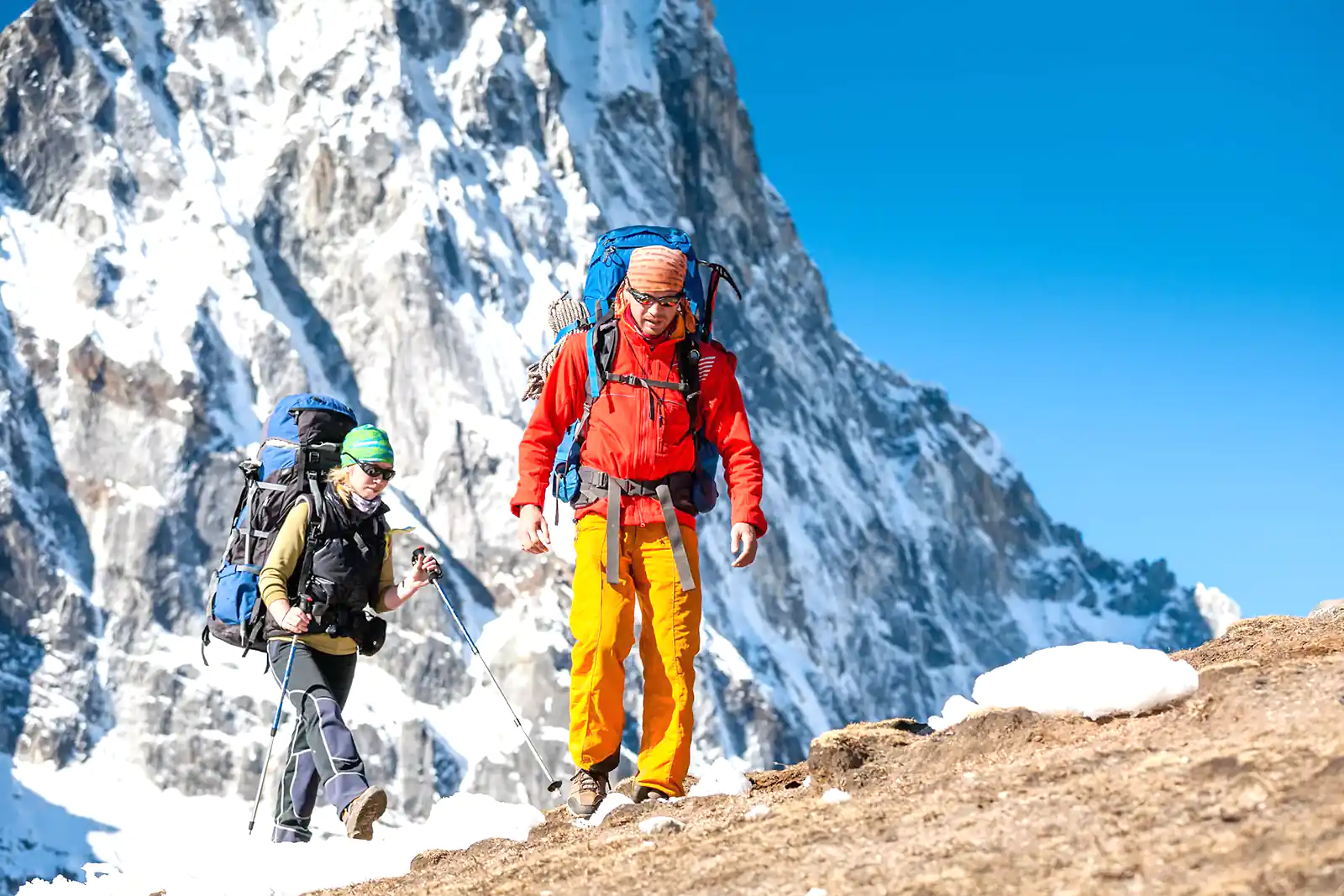
Accommodation and Facilities
A. Availability of teahouses and lodges in August
Despite being the off-peak season, August still offers a range of teahouses and lodges along the Everest Base Camp Trek route. While the number of trekkers might be lower than in peak months, these establishments remain open, offering basic amenities and a warm resting place. Trekkers can enjoy the charm of cosy teahouses amidst the tranquil Himalayan landscapes.
B. Tips for securing accommodation during the off-peak season
Securing accommodation during the off-peak season requires a touch of preparedness. As the flow of trekkers is more manageable, finding a place to stay is generally more accessible. However, arriving at each destination earlier in the afternoon is recommended to secure a comfortable spot. Flexibility regarding room preferences and sharing accommodations is a practical approach to ensure a smooth experience.
Safety and Health Tips
A. Proper acclimatization strategies
Ensuring a safe and enjoyable Everest Base Camp Trek in August hinges on proper acclimatization strategies. Gradual ascent and rest days are essential to allow your body to adjust to higher altitudes. This precaution minimizes the risk of altitude sickness, ensuring a healthier and more comfortable journey.
B. Hydration and maintaining hygiene in wet conditions
Staying well-hydrated and maintaining hygiene takes on added importance during the monsoon season. Drinking enough water helps counter the humid conditions while practising good hygiene prevents infections. Carrying a reusable water bottle and water purification tablets allows trekkers to stay refreshed without contributing to environmental waste.
C. Recognizing and managing altitude-related symptoms
Recognizing and managing altitude-related symptoms is crucial for a safe trekking experience. Headaches, dizziness, and nausea are indicators of altitude sickness. It’s essential to descend to lower altitudes if symptoms worsen. Carrying altitude sickness medications as a precaution and a first aid kit ensures prompt response to health concerns.
Cultural Insights and Interactions
A. Learning about local traditions and daily life
Everest Base Camp Trek in August offers a unique opportunity to delve into local traditions and daily life. As trekkers pass through charming Sherpa villages, they can witness the simplicity and resilience of mountain communities. Engaging with locals provides insights into their customs, architecture, and way of life, fostering a deeper connection with the region’s cultural tapestry.
B. Engaging with local communities during festivals
August trekking coincides with monsoon festivals like Janai Purnima and Gai Jatra, presenting a chance to engage with local communities during their celebrations. Participating in these festivities grants a glimpse into their spiritual practices and values. Observing traditional dances, songs, and rituals during the festivals enriches the trekking experience, providing trekkers with a more holistic understanding of the Himalayan culture.
Conclusion
A. Recap of the unique experience of Everest Base Camp Trek in August
Trekking to Everest Base Camp in August is a journey that encapsulates the essence of adventure amidst the Himalayan splendour. The unique experience of navigating through rain-kissed trails, witnessing lush landscapes, and immersing in local traditions creates memories long after the trek. Despite the challenges posed by the monsoon season, the rewards are abundant—breathtaking views, cultural insights, and a sense of connection with nature that is second to none.
B. Encouragement for adventurers seeking an unconventional Himalayan journey
For adventurers seeking an unconventional Himalayan journey, the allure of August trekking is undeniable. The quieter trails, the vibrancy of blooming flora, and the intimate encounters with local life offer a perspective distinct from peak seasons. This journey fosters personal growth and a deeper appreciation for the harmonious coexistence of nature and culture. With each step taken, the unconventional path becomes a testament to the spirit of exploration and the resilience of those who tread it.
As you conclude your Everest Base Camp Trek in August, you carry the memories of a unique odyssey that has enriched your soul and broadened your horizons. The call of the Himalayas remains, inviting you to go on yet another adventure and continue discovering the beauty that awaits beyond the well-trodden paths.
Related Post:
Everest Base Camp Trek in January
Everest Base Camp Trek in February
Everest Base Camp Trek in March
Everest Base Camp in April
Everest Base Camp Trek in May
The Beauty of Everest Base Camp Trek in June
An Epic Journey to Everest Base Camp Trek in July
Everest Base Camp Trek in October
